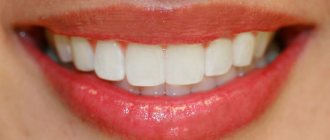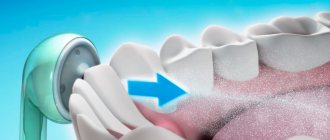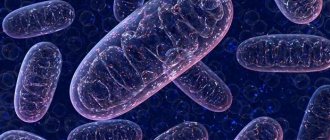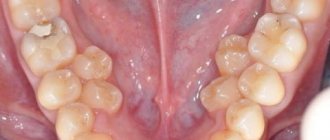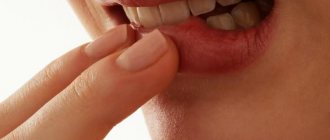We swallow saliva regularly. And we are accustomed to the fact that the oral cavity is always wet and we perceive the cessation of sufficient production of this biological fluid with suspicion. As a rule, increased dry mouth is a sign of some disease.
Saliva is a common and necessary biologically active liquid. Helps maintain the level of immune defense in the oral cavity and digestion of food. What is the composition of human saliva, fluid production rates, as well as physical and chemical properties?
A little biology
Saliva is a biological substance secreted by the salivary glands. Liquid is produced by 6 large glands - submandibular, parotid, sublingual - and many small ones located in the oral cavity. Up to 2.5 liters of fluid are released per day.
The composition of the secretions of the salivary glands differs from the composition of the fluid in the oral cavity. This is due to the presence of food debris and the presence of microorganisms.
Functions of biological fluid:
- wetting the food bolus;
- disinfectant;
- protective;
- promotes articulation and swallowing of food bolus;
- breakdown of carbohydrates in the oral cavity;
- transport - the liquid wets the epithelium of the oral cavity and participates in the exchange of substances between saliva and the oral mucosa.
Mechanism of saliva production
From ulcers to infections
An experienced doctor can judge the condition and functioning of certain organs by the nature of saliva, as well as identify certain diseases at an early stage. Thus, during infectious diseases, the slightly alkaline reaction of saliva changes to acidic. With nephritis (inflammation of the kidneys), the amount of nitrogen in saliva increases, the same thing happens with peptic ulcers of the stomach and duodenum. With diseases of the thyroid gland, saliva becomes viscous and foamy. The composition of saliva also changes in some tumors, which makes it possible to detect the disease or confirm the diagnosis when the clinical picture is not yet obvious.
Article on the topic
Come on, breathe! What causes bad breath
As the body ages, the proportions of micro- and macroelements in saliva are disrupted, which leads to the deposition of tartar, increasing the likelihood of caries and inflammatory periodontal diseases.
There is a change in the composition of saliva during fasting, as well as with certain hormonal imbalances.
So don’t be surprised if your doctor orders a saliva test—you can really learn a lot from it.
Taste of illness. How to determine your diagnosis by the taste in your mouth
More details
Physical properties and composition of saliva
Biological fluid in a healthy person has a number of physical and chemical properties. They are presented in the table.
Table 1. Normal characteristics of saliva.
| Index | Characteristic |
| Transparency | Transparent, minor inclusions of air, pieces of food. |
| Density | Slightly higher than the density of water, depending on the composition - from 1 to 1.12 g/ml. |
| Color | Normally – absent. |
| Viscosity | Insignificant and unstable, depends on the current state of the body. |
| Taste | Absent. |
| pH | Alkaline – 7.4–8.0. |
The main component of oral fluid is water – up to 98%. The remaining components can be roughly divided into acids, minerals, trace elements, enzymes, metal compounds, and organics.
What should you be wary of?
Typically, patients' complaints are related to the fact that in the morning their saliva is not as usual: thick, sticky or foamy. In such cases, accompanying symptoms may occur:
- violation of taste perception;
- constant dry mouth and throat;
- feeling of persistent thirst;
- tingling sensation on the tongue;
- difficulty and pain when chewing and swallowing food;
- sore throat and hoarseness;
- cracks on the lips;
- rapid formation of plaque on teeth;
- inflammatory processes in the oral cavity and gums.
All these phenomena may be a consequence of changes in the composition, quantity and viscosity of saliva. A simple test that you can take yourself in the morning on an empty stomach will help you verify the validity of such suspicions or dispel them. To do this, you need to get a pipette with marked divisions and a stopwatch.
First, you need to put a milliliter of ordinary water into a pipette and observe how long it takes for it to flow out. Then you need to do the same with the salivary fluid. It remains to compare the two indicators - normally, they should be approximately the same.
But self-examination is a subjective thing, therefore, if there is any suspicion of a serious malfunction in the body, you should contact specialists to conduct accurate laboratory tests. Doctors determine whether the consistency of saliva is normal using a viscometer. If he confirms that the patient really has too thick saliva in his mouth, the doctor will determine the cause of the defect and prescribe the necessary treatment. Diagnosis will require additional tests and consultations with specialists, so self-medication in such a situation is unacceptable.
Subtleties of saliva secretion
0.5 ml of saliva per minute should be produced in a healthy person during the daytime
The work of the salivary glands is controlled by the autonomic nervous system, centered in the medulla oblongata. Salivary fluid production varies depending on the time of day. At night and during sleep, its amount decreases sharply and increases during the day. In a state of anesthesia, the work of the glands completely stops.
During wakefulness, 0.5 ml of saliva is secreted per minute. If the glands are stimulated - for example, during a meal - they produce up to 2.3 ml of liquid secretion.
The composition of the secretion of each gland is different. When it enters the oral cavity, mixing occurs, and it is called “oral fluid.” Unlike the sterile secretion of the salivary glands, it contains beneficial and opportunistic microflora, metabolic products, desquamated epithelium of the oral cavity, discharge from the maxillary sinuses, sputum, red and white blood cells.
pH values are influenced by compliance with hygiene requirements and the nature of food. So, when stimulating the work of the glands, the indicators shift to the alkaline side, and with a lack of fluid - to the acidic side.
In various pathological processes, there is a decrease or increase in the secretion of oral fluid. Thus, with stomatitis, neuralgia of the branches of the trigeminal nerve, and various bacterial diseases, overproduction is observed. With inflammatory processes in the respiratory system and diabetes mellitus, the secretion production of the salivary glands decreases.
Saliva is normal
The salivary glands of a healthy adult produce from one to two liters of secretion every day. The purpose of this liquid is to lubricate the oral cavity to facilitate chewing and speaking. Thanks to the secretion, the digestion of food begins at the moment of chewing it, since saliva contains active enzymes. The perception of the taste of foods also depends on the degree of their processing by salivary fluid.
Saliva is the first most accessible natural antiseptic. This is why small wounds in the mouth heal much faster than on the skin.
In order for all these processes to proceed exactly as needed, salivation must be sufficient, and the discharge itself must be transparent or slightly cloudy, liquid and imperceptible to humans. A violation of the usual consistency of saliva cannot be ignored, as an obsessive feeling of discomfort is created, speech and the usual rhythm of life are disrupted, and problems with digestion, teeth and oral mucous membranes are possible.
Functions of saliva in the human digestive system: breakdown of proteins, complex carbohydrates
Saliva is important for the human digestive system.
Food stays in the mouth for only a few seconds. But already there the process of digestion begins. In response to mechanical irritation of the mucous membrane when chewing food, the salivary glands begin to work more actively. The secreted saliva performs the following functions in human systems as the first digestive juice:
- Breakdown of food
Partially processed food becomes available to the taste buds and the appetite is awakened. Food breaks down into individual components under the action of enzymes.
- Breakdown of complex carbohydrates
Occurs with the participation of two main enzymes: amylase and maltase. Amylase breaks down starch and glycogen molecules into maltose and sucrose. Next, maltase is included in the process - it converts maltose into simple sugar (glucose). In this form, carbohydrates enter the stomach and intestines, where they are easily and fully absorbed.
- Protein breakdown
Possibly under the influence of proteolytic enzymes: ribonuclease, peroxidase, transaminase. They act on the nucleic acids of viruses, thereby providing antiviral protection to the oral cavity. Saliva does not affect the digestion of food proteins.
- Breakdown of fats
Occurs under the action of lipase. It breaks down triglycerides into glycerides and fatty acid components, which can be absorbed from the intestines into the blood. It is salivary lipase that helps newborns absorb the fats of breast milk when their digestive system is not yet perfect.
- Formation of a food bolus and swallowing of food
Saliva moistens particles of chewed food and, with the help of mucin, glues them into a lump. It is easily swallowed along with saliva and slips into the esophagus.
- Reflex secretion of digestive juices
Increased salivation stimulates the production of gastric and other juices for further digestion of food.
The benefits of saliva for effective digestion and protection of the oral cavity cannot be overestimated. The high-quality performance of all functions by saliva is an indicator of a person’s good health. Saliva can be used as an indicator to detect certain pathologies, along with clinical blood or urine tests. This very promising direction in diagnostics is used, for example, to determine the level of free hormones, the herpes virus, the presence of diabetes mellitus in a person, and even the fact of drug use.
Why does caries develop?
Scientists are still studying the mechanisms of the development of caries - one of the most common diseases on the planet. They agree that caries is caused by microorganisms living in the oral cavity, in the presence of associated factors. These factors include carbohydrate nutrition, poor oral hygiene, and the qualitative and quantitative composition of saliva.
How does the carious process develop and why do cavities form in teeth? Contrary to popular belief, microbes do not chew holes in teeth; caries develops differently. Cariogenic bacteria (one of the species is Streptococcus mutans) form colonies on the surface of teeth, collecting in a biofilm - dental plaque. These bacteria “love” foods rich in carbohydrates and ferment the sugars contained in them. The products of carbohydrate processing by bacteria are organic acids. So they harm our teeth and contribute to the development of caries.
Acids produced by bacteria disrupt the normal structure of the enamel, promote its demineralization, penetrate into the deep tissues of the tooth and continue to destroy it from the inside. The more microbes in the mouth, the more carbohydrates they receive, the higher the acidity on the surface of the teeth and the more active the process of their destruction occurs.
